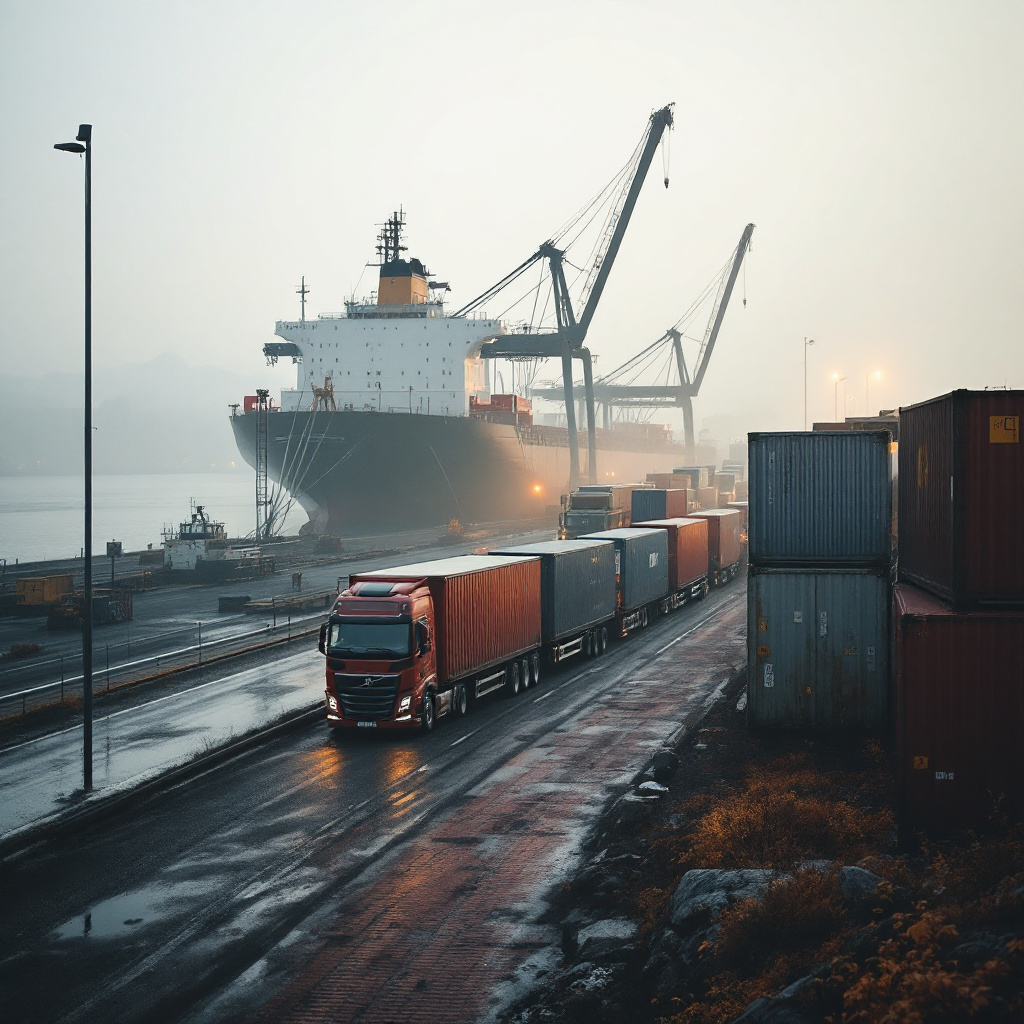Sweden, with its advanced infrastructure and strategic location in Northern Europe, plays a crucial role in international and domestic freight transportation. The country has a well-developed logistics network that connects key urban and industrial centers while facilitating trade with neighboring countries. Sweden’s commitment to sustainability also drives innovations in eco-friendly transportation.
This article explores the main components of Sweden’s freight transport system, including road, rail, maritime, and air freight, along with current trends and challenges in the logistics industry.
Key Freight Transportation Modes in Sweden
1. Road Freight: The Backbone of Logistics
Sweden’s road network is one of the most efficient in Europe, allowing for seamless cargo transport across the country. The European routes E4, E6, and E18 serve as major corridors for domestic and international trucking, linking Sweden with Norway, Denmark, and Finland. Road freight accounts for a significant share of cargo movement, particularly for consumer goods, manufacturing materials, and food products.
The Swedish government actively promotes sustainable trucking solutions, with policies supporting the transition to electric and biofuel-powered trucks. High-capacity transport (HCT) trucks, which can carry heavier loads while reducing emissions per unit, are also becoming more common.
2. Rail Freight: A Sustainable Alternative
Sweden’s rail network is an essential component of its logistics sector, offering a sustainable alternative to road freight. The country’s rail system is well-integrated with European freight corridors, allowing efficient transportation of raw materials, timber, and industrial goods.
Swedish companies increasingly utilize intermodal solutions, combining rail with road or maritime transport to reduce carbon emissions. Investments in electrified rail lines and automation enhance efficiency and make rail an attractive choice for logistics operators.
3. Maritime Freight: International Trade Connectivity
Sweden’s extensive coastline and numerous ports make maritime freight a vital part of the supply chain. Ports such as Gothenburg, Stockholm, and Malmö serve as key gateways for imports and exports, handling goods transported to and from Europe, Asia, and North America.
Gothenburg, Sweden’s largest port, plays a strategic role in global logistics, providing direct access to major international shipping lanes. The port is also investing in green logistics solutions, including shore power for vessels and automated container handling systems.
4. Air Freight: Fast and Efficient Logistics
For time-sensitive cargo, air freight is a critical transport mode in Sweden. Stockholm Arlanda Airport, Gothenburg Landvetter Airport, and Malmö Airport handle significant volumes of air cargo, supporting industries such as pharmaceuticals, technology, and e-commerce.
Air freight remains a preferred choice for high-value goods, though efforts are being made to reduce emissions by increasing fuel efficiency and using sustainable aviation fuels.
Current Trends and Challenges in Swedish Freight Transport
Sustainability and Green Logistics
Sweden is at the forefront of sustainable logistics, with government initiatives aimed at reducing the carbon footprint of freight transport. Policies encouraging the use of electric trucks, rail freight expansion, and biofuels are helping the industry meet Sweden’s ambitious climate goals.
Digitalization and Automation
Advancements in digital logistics, including AI-driven route optimization, automated warehouses, and blockchain-based tracking systems, are transforming Sweden’s freight sector. These innovations improve efficiency, reduce costs, and enhance supply chain transparency.
Cross-Border Trade and EU Regulations
Sweden’s trade relies heavily on smooth cross-border transport with other EU countries. Compliance with European Union transport regulations, customs procedures, and environmental policies remains a priority for logistics operators.
Conclusion
Sweden’s freight transport industry is a key driver of economic growth, supported by a strong logistics infrastructure, sustainable transport initiatives, and digital transformation. While challenges such as congestion, high operational costs, and regulatory compliance exist, Sweden continues to innovate and adapt to ensure efficient and environmentally friendly cargo movement.
With ongoing investments in green logistics, smart infrastructure, and intermodal transport, Sweden is poised to remain a leader in sustainable and efficient freight transportation in Europe.


